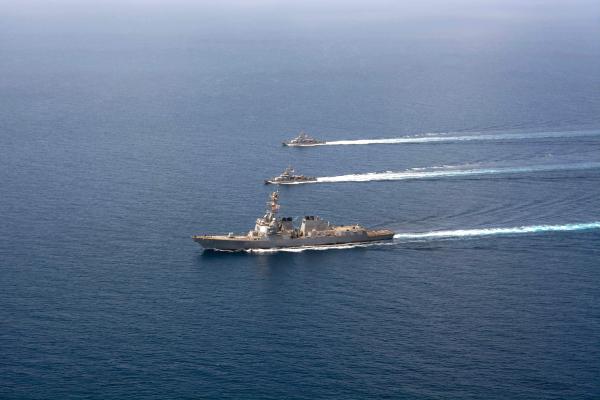The mountainous city of Taif is only seventy kilometres away from the holy city of Makkah, and the missile that targeted Taif two days ago is a new and dangerous development in the war in Yemen. It confirms that the conflict in Yemen is a regional one. It also strengthens Saudi Arabia’s argument that the war has been directed against it from the beginning.
The Scud missiles were launched by Houthi rebels loyal to Iran, and most likely in collaboration with the former Yemeni president Ali Abdullah Saleh, who used to own an arsenal of these Russian arms.
It is important to know the conditions that existed at the beginning of the Yemeni war when Saudi Arabia and the Gulf Arab alliance’s intervention in the Yemeni civil war was criticised. Some of the criticism indicated, correctly, that controlling the war in this mountainous country with tribal disputes would be a difficult task. Holders of this view believe that Saudi Arabia should ignore this after trying to come up with a peaceful solution for four years. The solution was a success at first, but then failed after the Houthis, who do not make up more than 15 percent of Yemen’s population, overturned the agreement, occupied the capital Sana’a by force and decided to establish a government of their choice there.
Perhaps some believe that Saudi Arabia could have controlled the Houthi takeover of power in Sana’a or ignored it, closed the borders and left Yemenis to their fate. However, the Houthis practically seized almost all of Yemen by force which meant that for the first time in this regional conflict, Iran had a country subordinate to it south of Saudi Arabia. This happened at approximately the same time that Iran sought to take control of Iraq, north of Saudi Arabia and Syria, not to mention its attempts to stir up unrest in Bahrain and Saudi Arabia’s Eastern Province. It is not difficult to understand the Iranian project which surrounds Saudi Arabia from three sides.
With the Houthi takeover of government by force, Yemen became a military base for the Iranians. The Houthis, like the Lebanese Hezbollah, have become a special militia for the regime in Tehran. Even this geopolitical analysis may not be enough to push Saudi Arabia and its allies to fight a war there. However, the rebels have inherited military capabilities, like the arsenal of Scud missiles, that are able to threaten the heart of Saudi Arabia.
At the beginning of last year, I wrote an article and said in it that the Houthi threat is not limited to the cities on the southern border of Saudi Arabia, but rather that their danger could reach major faraway cities such as Jeddah. The Russian Scud-D missiles have a range of more than 800 kilometres, and the Saudi Air Force bombed the arsenal that the Houthis possessed at the beginning of the war. However, it is believed that some of these missiles are stored in secret hiding places.
This week, a Scud-D missile travelled 700 kilometres and fell in Taif which is in the Makkah province, the heart of the kingdom, and the Saudi defense force intercepted the missile. This development, the first of its kind, confirms that the war in Yemen is not an internal issue as many have written, but that Yemen is an Iranian military base directed against Saudi Arabia. This is the reality and not just an analysis that is based on the view that the conflict is only a struggle between Yemeni opponents. When Iran created Hezbollah in southern Lebanon, its goal was never to support Lebanese resistance that aimed to liberate the south from Israeli occupation as many claimed.
The movement was an advanced Iranian military force that the Iranian regime used to negotiate with the west and threaten countries in the region. Today, Hezbollah is fighting in Syria and Iraq on behalf of the Iranians. Previously, it trained Yemeni Houthis, gave them a name similar to Hezbollah (Ansar Allah) and taught them to repeat empty slogans in Yemen like “Death to America, Death to Israel”.
Yemen has been an Iranian problem since the beginning of the crisis and this is why the reconciliation and the political solution have been sabotaged. Saudi Arabia, the UN envoy and Western countries had agreed on two concepts to solve the Yemeni crisis; the first was accepting the participation of the rebels in the political framework, and the second was supporting the democratic solution and leaving the Yemeni people to write their constitution and choose their president. Nevertheless, Iran pushed the rebels to alter this equation by seizing the city of Omran and Sana’a and demanding a significant share in power regardless of the outcome of any future elections.
The Scud missile that was intercepted near Makkah strengthens Saudi Arabia’s political view that Iran has been planning for some time to create an armed entity north of Yemen with which it can threaten Saudi Arabia and that it chose the Houthis for this job. It also indicates that whether the solution there is political or military, the conflict in Yemen cannot be separated from the conflict in the region, and that the region cannot ignore the causes of the war in Yemen.
